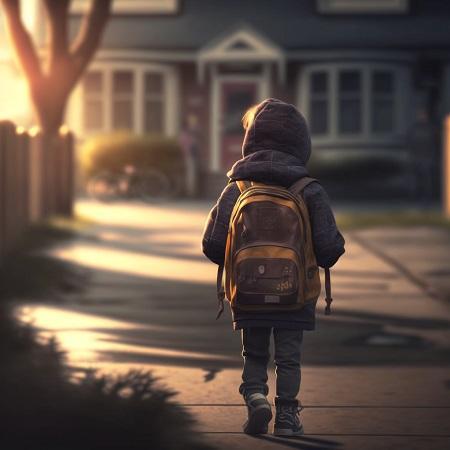With the school year starting back up, it’s important for parents, students, and educators to take the necessary steps to ensure a safe and successful school year.
First and foremost, it’s essential for parents and students to have a plan for getting to and from school. Whether it’s walking, biking, or taking the bus, make sure to choose the safest route and to always be aware of your surroundings. Parents should also teach their children about basic traffic safety, such as crossing the street at crosswalks and looking both ways before crossing.
As we gear up for the new school year, it’s crucial to prioritize safety and well-being for all students, teachers, and staff. To help with this transition, we’ve put together a comprehensive checklist of 10 essential tips to keep in mind as you navigate the school year. From preparing emergency plans to traffic safety, these tips will help ensure a smooth and safe return to the classroom.
- Choose the safest route for getting to and from school and always be aware of your surroundings. Choosing the safest route to and from school is essential in ensuring the safety of students. Parents should walk the route with their children, pointing out potential hazards and providing guidance on how to stay safe. Additionally, children should be taught to be aware of their surroundings and avoid distractions while walking to school, such as using their phones.
- Teach children basic traffic safety, such as crossing the street at crosswalks and looking both ways before crossing. Basic traffic safety is crucial for keeping children safe while walking or biking to school. Parents should teach their children about the importance of crossing the street at crosswalks and looking both ways before crossing. Additionally, students should be taught to follow traffic signals, and to walk, not run, across the street.
- Know and understand the school’s emergency procedures, including where to go in case of a fire or natural disaster, and how to respond to a lockdown or active shooter situation. Knowing and understanding the school’s emergency procedures can help to prepare students for potential dangers and help them to remain calm and collected in emergency situations. Parents and students should familiarize themselves with the school’s emergency procedures and should discuss them with their children.
- Remind students to always use the handrails while getting on and off the bus, and to stay seated while the bus is in motion. Taking the school bus is often the safest way for students to get to school, but it’s important to remind them of the safety protocols. Students should always use the handrails while getting on and off the bus, and they should stay seated while the bus is in motion.
- Educate children about the dangers of bullying and the importance of reporting any suspicious or concerning behavior. Bullying can have serious consequences on a child’s mental and emotional well-being. It’s important for parents to have open communication with their children about bullying and to teach them the importance of reporting any suspicious or concerning behavior to a trusted adult.
- Remind students to keep their personal belongings safe and secure, such as backpacks and phones, and to be aware of their surroundings at all times. Personal belongings, such as backpacks and phones, can be easy targets for thieves. Students should be reminded to keep their belongings close and to be aware of their surroundings at all times.
- Promote a positive and safe school culture by encouraging positive relationships between students and staff, promoting respect for others, and implementing anti-bullying programs. A positive and safe school culture can help to create a sense of community and belonging, which can make students feel more comfortable and secure in their school environment.
- Encourage open communication between parents and children about potential dangers and safety precautions. Open communication between parents and children can help to establish trust and understanding, which is essential for keeping children safe. Parents should take the time to listen to their children’s concerns and to provide guidance on how to stay safe.
- Stay informed about school safety by following the school’s website and social media pages, and by attending school safety meetings and events. Keeping informed about school safety can help parents and students to stay aware of any potential dangers and to take the necessary precautions.
- Encourage students to speak up and report any suspicious or concerning behavior to the school administration or a trusted adult. Encouraging students to speak up and report any suspicious or concerning behavior can help to ensure that any potential dangers are addressed in a timely manner. It’s important for students to feel comfortable reporting any concerns they may have, and to know that their concerns will be taken seriously and acted upon.
In conclusion, keeping our kids safe during the school year takes a community effort. By taking the necessary steps, such as having a plan for getting to and from school, being aware of emergency procedures, and promoting a positive and safe school culture, we can ensure a successful and safe school year for all.










